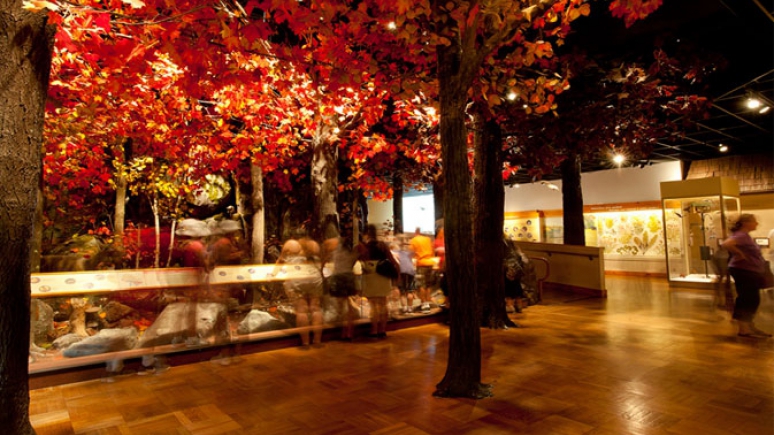A Handy Sensory Friendly Guide for Visitors, prepared in collaboration with Autism Ontario
Tips on Visiting the Royal Ontario Museum
Getting to the Museum

The Entrance is located on Queens Park, south of Bloor Street and Avenue Road. There is a lot of construction in the area. You may take transit to St. George (wheelchair accessible) or Museum Subway Stations. If you are arriving by car, the closest parking lot is the Cumberland Parkade, 148 Cumberland Street . For more information on arriving at the museum, see Location & Parking Guide .
Arriving at the Museum
|
|
Be prepared for a crowd of people and a long line up when you enter the building. |
|
|
The museum is typically busier on weekends, weekday mornings, and during special events such as March Break and ROM for the Holidays. If you want to visit the museum when it is quiet, we suggest that you visit after 2 pm on a weekday during the school year. The full museum schedule can be viewed here . |
|
|
Do you have vertigo? Note that the crystal creates sloped walls inside the lobby and in several galleries. |
|
|
If you have a coat or backpack, be prepared to check it. The coat check is located after the ticket counter, past the rotunda staircase and around the corner to the right. If you need a wheelchair, ask the attendant. |
The Museum Environment: Sensory Notes
|
The museum is currently undergoing construction. There are spaces closed off for construction, and sounds like drilling and hammering in certain areas of the building. |
|
|
|
Some of the angles of the floor and the walls in the museum are sloped. This might mean you need to take some time to adjust in the space. |
|
|
In the museum, sometimes sound can echo or be louder when there are large crowds. Be prepared for some additional noise. |
|
|
There are always crowds in the museum. Sometimes some spaces are busier than others and sometimes spaces that were quiet can get very noisy. For example, Currelly Gallery (on the first floor) is a space that is often used for special events. This means it can get loud. |
|
|
Keep in mind that lighting, temperature and scents can change between galleries, depending on the collection. For example, the Bat Cave is a lot of fun, but it’s also dark and contains sounds that can be surprising. You don’t need to enter if you don’t want to. |
Need A Quiet Space?


The 3rd floor has a quiet area in the northeast corner of Africa, the Americas and Asia Pacific.
Guidelines for Enjoying the Museum
|
|
Remember to take a Map when buying your ticket or dowload it from the website before your visit. |
|
|
Note where the Washrooms are on each floor.
Be aware! There are no washrooms on the Fourth Floor. |
|
|
Do not touch objects. Only touch objects that are clearly marked as safe to touch.
|
|
|
Food and drinks are not allowed in the galleries.
|
The Hands-on Galleries (Hands-on Biodiversity and WonderWorks) are a must for all visitors! Here are some tips:


Left: Explore cave formation and how bats use echolocation to navigate at night. Image © Ray Steinke, 2012 Right: Hands-On Galleries
There is a rule list at the entrance of the WonderWorks. Some fun activities in WonderWorks include: building blocks, story nook area, magnet wall, and more!
Each display in the Hands-on Biodiversity gallery has rules too. The Bat Cave can be fun, but please also note that it is a multi-sensory experience that includes strobe lighting and noises.
Ask a volunteer or staff member for more details on any of our activities.
